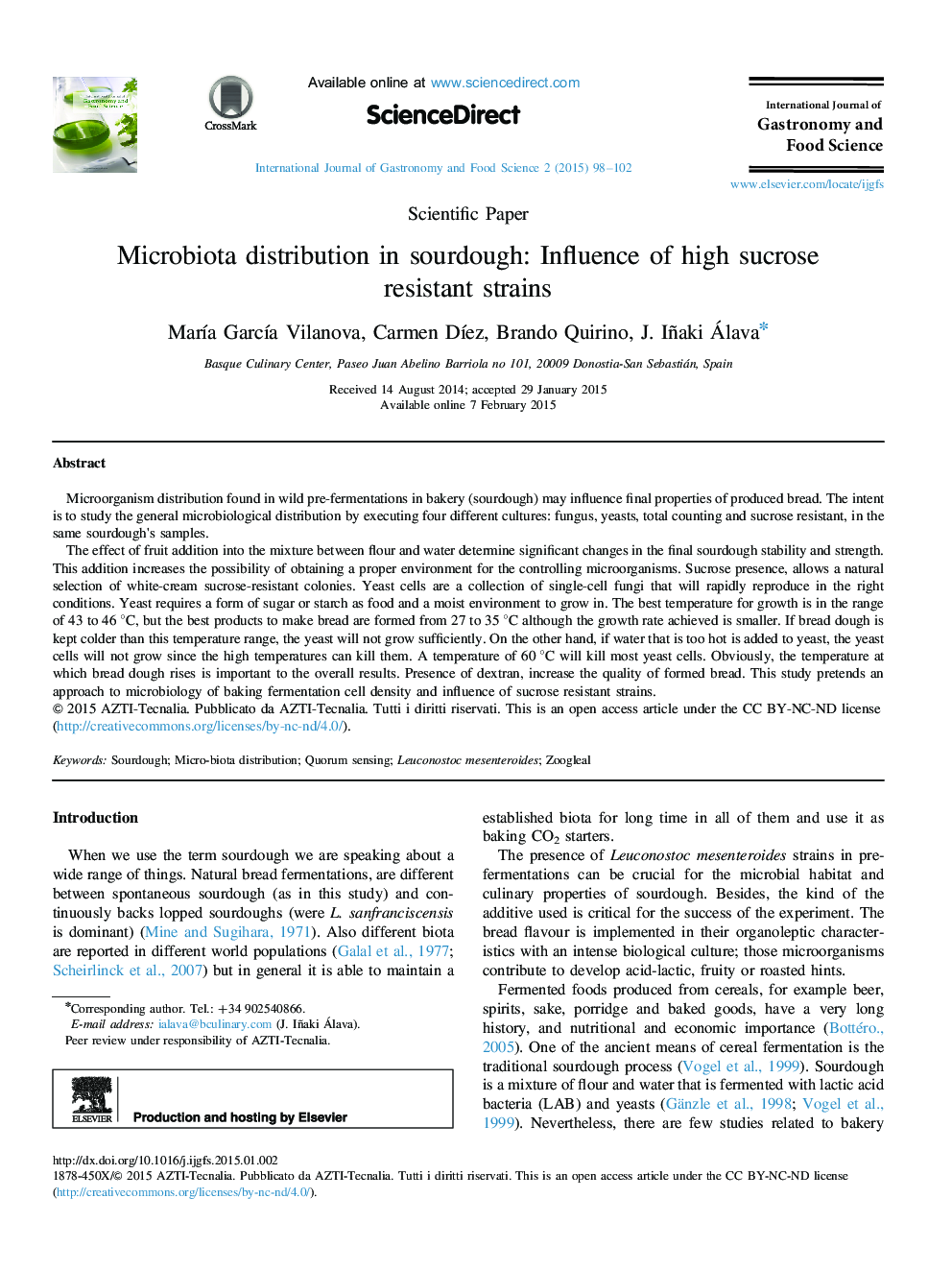| Article ID | Journal | Published Year | Pages | File Type |
|---|---|---|---|---|
| 1106993 | International Journal of Gastronomy and Food Science | 2015 | 5 Pages |
Microorganism distribution found in wild pre-fermentations in bakery (sourdough) may influence final properties of produced bread. The intent is to study the general microbiological distribution by executing four different cultures: fungus, yeasts, total counting and sucrose resistant, in the same sourdough׳s samples.The effect of fruit addition into the mixture between flour and water determine significant changes in the final sourdough stability and strength. This addition increases the possibility of obtaining a proper environment for the controlling microorganisms. Sucrose presence, allows a natural selection of white-cream sucrose-resistant colonies. Yeast cells are a collection of single-cell fungi that will rapidly reproduce in the right conditions. Yeast requires a form of sugar or starch as food and a moist environment to grow in. The best temperature for growth is in the range of 43 to 46 °C, but the best products to make bread are formed from 27 to 35 °C although the growth rate achieved is smaller. If bread dough is kept colder than this temperature range, the yeast will not grow sufficiently. On the other hand, if water that is too hot is added to yeast, the yeast cells will not grow since the high temperatures can kill them. A temperature of 60 °C will kill most yeast cells. Obviously, the temperature at which bread dough rises is important to the overall results. Presence of dextran, increase the quality of formed bread. This study pretends an approach to microbiology of baking fermentation cell density and influence of sucrose resistant strains.
